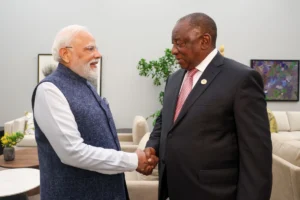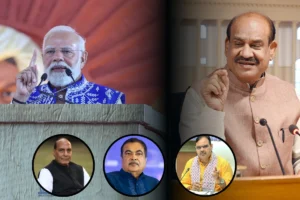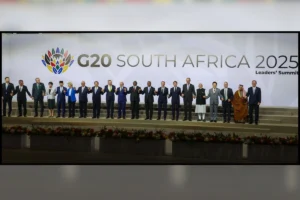
Chandrayaan 3
Chandrayaan-3 Live UpdatesWith the launch of Chandrayaan-3, the Indian Space Research Organisation (ISRO) is attempting to complete a successful soft landing on the Moon. The spacecraft is now prepared for its August 23 moon landing. India is now on track to join the United States, Russia, and China as the fourth country in the world to reach this incredible milestone.
The GSLV Mark 3 (LVM 3) heavy-lift launch vehicle was used to successfully launch the mission on July 14 from the Satish Dhawan Space Centre in Sriharikota, Andhra Pradesh. By August 23, it should land on the surface of the moon. It is the third lunar trip for India and its second attempt at a gentle landing on the lunar surface.
Chandrayaan-3’s final journey
On Thursday, the ISRO lunar spacecraft carrying Vikram and Pragyan will separate from the propulsion module. ISRo will perform movements to assist in placing Vikram in an elliptical orbit, which is necessary.
The Times of India reported that Vikram will eventually be in an orbit with the Perilune (closest point to the Moon) at 30 km and the Apolune (farthest point from the Moon) at 100 km. From this orbit, Chandrayaan-3 will try its last landing.
Chandrayaan-3: Role of Vikram lander
Dr. Vikram A. Sarabhai, the founder of the Indian Space Programme, is honoured by the name “Vikram Lander,” given by ISRO. The Vikram lander, according to the ISRO, has three payloads to accomplish its goals. ILSA, or the “Instrument for Lunar Seismic Activity,” is designed to measure seismicity near the landing site. RAMBHA-LP, also known as Chandra’s Surface Thermophysical Experiment, will measure the density of near-surface plasma (ions and electrons) and how it changes over time. ChaSTE will measure the thermal characteristics of the lunar surface near the polar region.
What is Moon’s south pole region?
It primarily consists of ice and might be abundant in other materials. According to NASA, the frozen water at the South Pole may be billions of years old and unaffected by the Sun’s radiation or geological processes. The cold-trapped craters have a fossil record of volatiles including water ice and hydrogen from the early Solar System. Since the material locked in the southern lunar region wouldn’t have undergone much change over time, it might include hints about the earliest stages of life.
The southern lunar pole has captivated scientists for a very long time.
India’s Chandrayaan-3 and Russia’s Luna-25: race to Moon’s south pole heats up
With Russia’s Luna-25 and India’s Chandrayaan-3 preparing for lunar landings next week, the race to the unknown south pole of the Moon is picking up speed. Each mission has important ramifications beyond the exciting competition in the skies.
Chandrayaan-3: Mistakes ISRO wants to avoid
Instead of a 500 square metre area, ISRO has increased the landing area and selected a location with a 4 km x 2.4 km size.
This time, the ISRO scientists have fueled the lander more.
The lander’s design has undergone changes. The lander only uses four thrusters because it lacks any more thrusters. Additionally strengthened to better withstand the force of landing, its legs.
RIGHT NOW, lander module separation, the lander module separation will occur between 1 and 1.30 pm.
Have any other nations successfully conducted a soft landing on the moon?
India will join the United States, Russia, and China as the fourth nation in the world to accomplish the feat following Chandrayaan 3’s successful landing. On the other hand, no other nation has ever set foot on the lunar South Pole.
Know more about the components and objectives of Chandrayaan-3
The components of Chandrayaan-3 include several electronic and mechanical subsystems designed to ensure a gentle and safe landing, including guidance and control systems, propulsion systems, and navigation sensors. There are also systems for releasing the rover, antennas for two-way communication, and other onboard electronics. Chandrayaan-3’s declared goals include a secure and soft landing, lunar rover wandering, and in-situ scientific research.
What did Chandrayaan 1 and 2 achieve?
The first-ever worldwide map of lunar sodium, improved understanding of crater size distribution, the unmistakable detection of lunar surface water ice with the IIRS instrument, and more are among the major scientific achievements of Chandrayaan-2. There have been over 50 publications that mention the mission.
According to the Indian Space Research Organisation (ISRO), the satellite completed more than 3400 orbits of the moon during the Chandrayaan-1 mission, and the mission was declared a success when contact with the spacecraft was lost on August 29, 2009.
To read more such news, download Bharat Express news apps


















